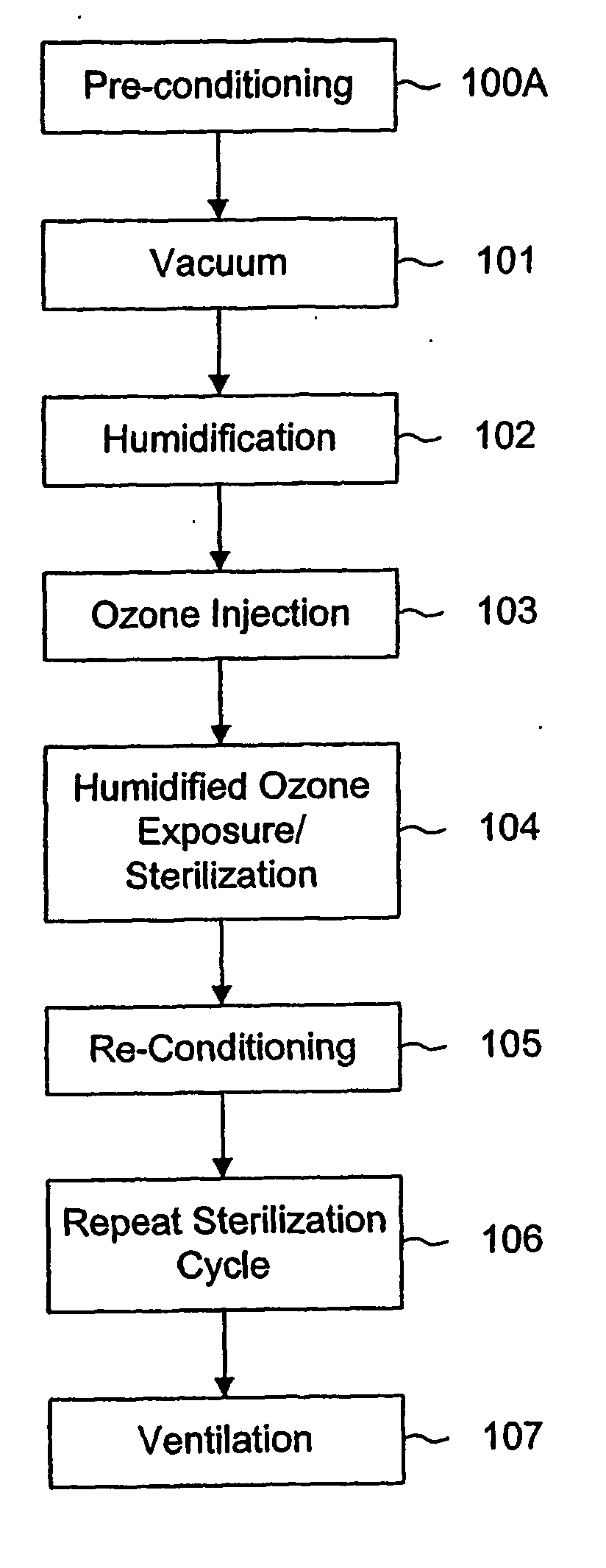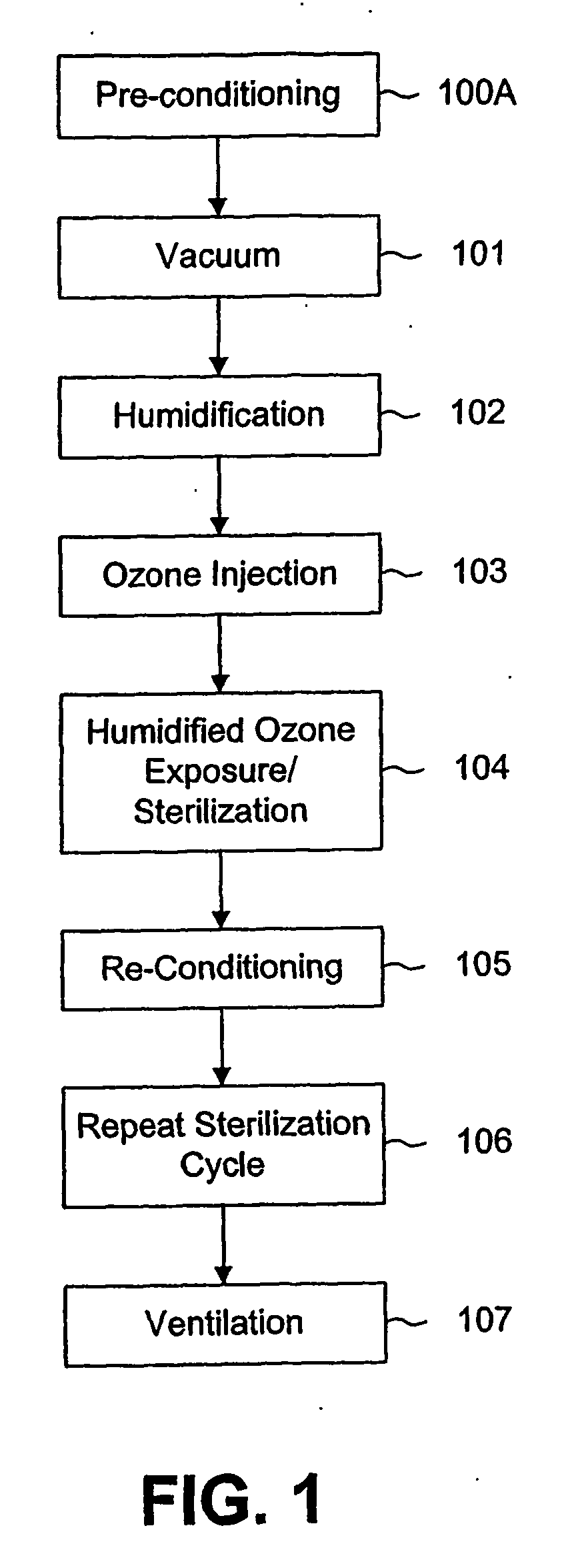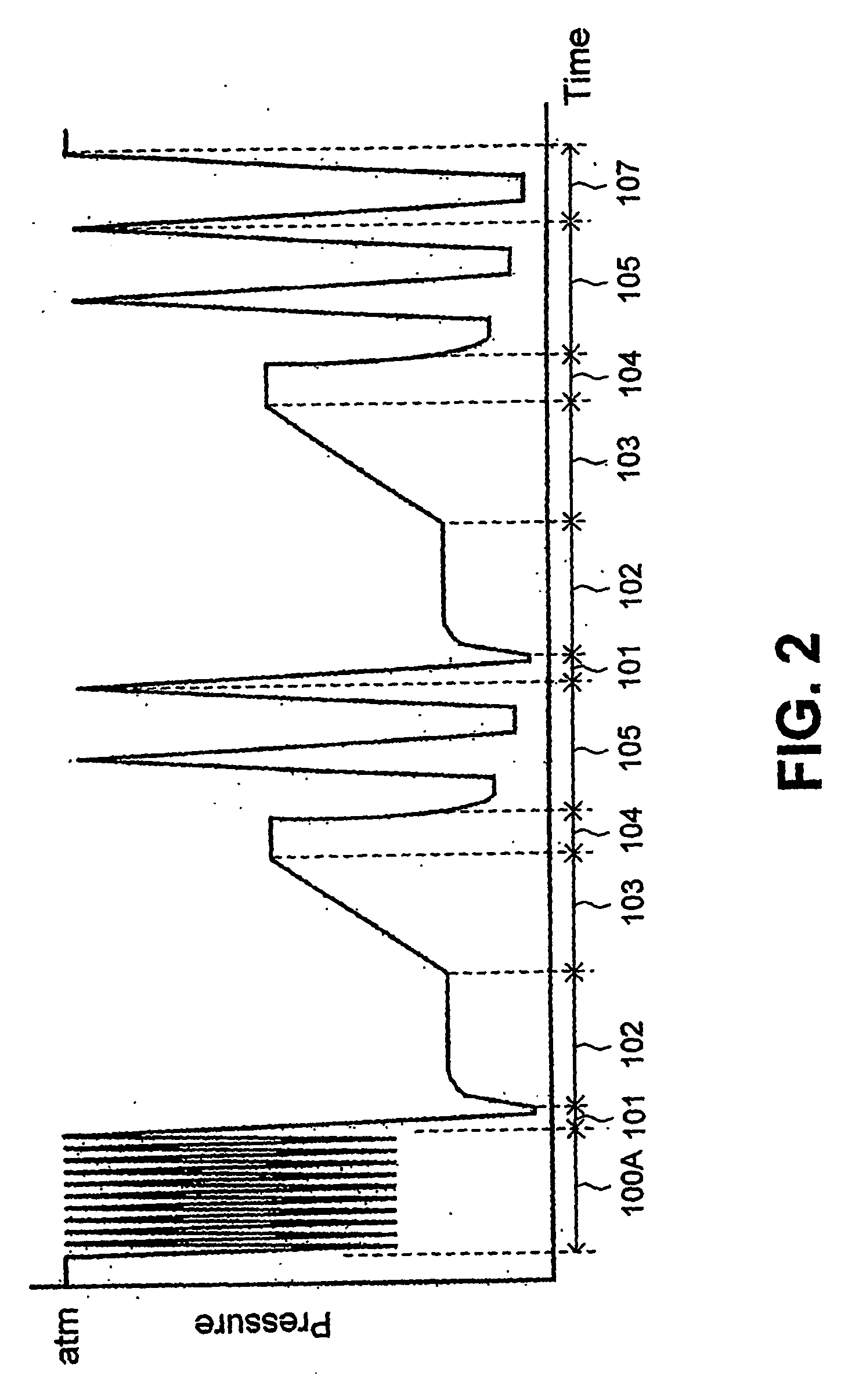Ozone sterilization method
- Summary
- Abstract
- Description
- Claims
- Application Information
AI Technical Summary
Benefits of technology
Problems solved by technology
Method used
Image
Examples
Embodiment Construction
[0030] As can be seen from FIGS. 1 and 2, the process can be regarded as including six or seven basic steps, some of which may be repeated in a second sterilization cycle.
[0031]FIG. 1 is a schematic representation of a sterilization process according to the invention, showing the steps of the process in sequence. FIG. 2 is another representation of a process according to the invention. FIG. 2 illustrates the process by showing the various steps as a function of the pressure. Thus the vertical axis shows the pressure, with atmospheric pressure represented at the top end of the vertical axis and zero pressure (or complete vacuum) at the bottom end of the vertical axis. The horizontal axis represents the sequence of steps in the process from left to right and thus corresponds to elapsed time, although not necessarily to any scale, but only for the purpose of illustration.
[0032] Since the present invention is mainly concerned with the humidification step, it will be understood that de...
PUM
 Login to View More
Login to View More Abstract
Description
Claims
Application Information
 Login to View More
Login to View More - R&D
- Intellectual Property
- Life Sciences
- Materials
- Tech Scout
- Unparalleled Data Quality
- Higher Quality Content
- 60% Fewer Hallucinations
Browse by: Latest US Patents, China's latest patents, Technical Efficacy Thesaurus, Application Domain, Technology Topic, Popular Technical Reports.
© 2025 PatSnap. All rights reserved.Legal|Privacy policy|Modern Slavery Act Transparency Statement|Sitemap|About US| Contact US: help@patsnap.com



